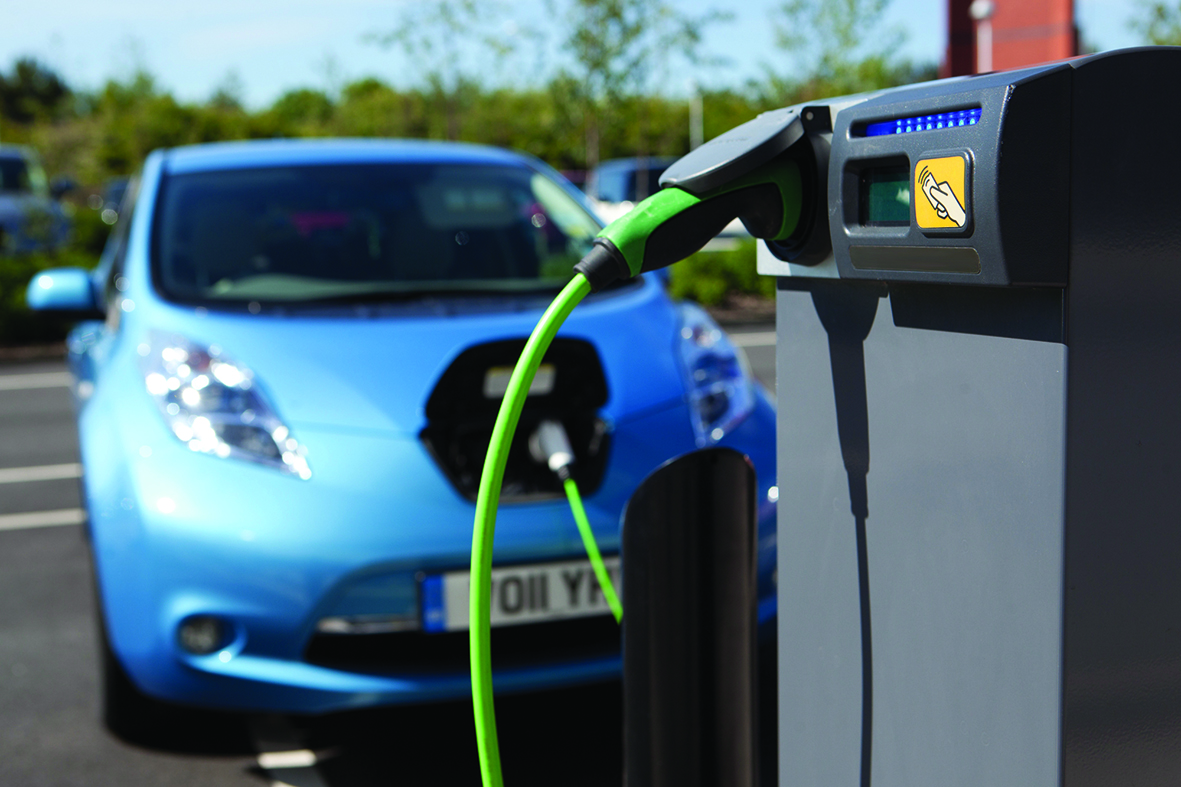Installing EV charge points

Before installing electric vehicle charge points, there needs to be an understanding of what will be charged, when and where, as well as a consideration of any future plans. Robert Evans, chair of the UK Electric Vehicle Supply Equipment Association, shares some best practice advice.
As an industry commentator I am often asked what fleets should consider when installing electric vehicle (EV) charge points.
I may be asked in my capacity as CEO of Cenex (www.cenex.co.uk), based on my team’s track record of EV and charging infrastructure projects for fleets. These include research projects on the newer, more novel approaches such as vehicle-to-grid (V2G) and inductive charging. However, my most common starting point is answering in my capacity as chair of the UK Electric Vehicle Supply Equipment (UKEVSE) Association. The UKEVSE is the trade association that represents charge point providers and charge point network operators active in the UK market. Whether I am responding on behalf of Cenex or the UKEVSE, my priority is to provide helpful and informative input, delivered with independence and integrity.
The UKEVSE has designed guidance documents and website content to provide useful information and independent advice to those planning to deploy charging infrastructure. The UKEVSE procurement guide, currently being refreshed, is the main guidance document. It has been written in a style designed to make the reader to feel like they have an expert advisor by their side, helping prompt them to seek answers to important questions based on the specifics of their own operations. The guide can be accessed at ukevse.org.uk/resources/procurement-guidance.
The key to this approach is that worthwhile assistance and good advice rely on first understanding the context for fleet manager planning and decision-making. I typically lead by asking my own set of questions, beginning with, “What are you planning to charge and when; where; and to what present and future plan?”
What are you planning to charge?
The reason to ask the “what” question is that the type of EVs to be charged helps indicate the type of charger I should recommend.
There isn’t a one-size-fits-all charge point. This is not a failing on the part of the charge point providers. Rather, it reflects the variety of approaches to EV charging that motor manufacturers apply to their products, which are influenced in part by the standards adopted in the national markets into which the manufacturers are selling their EVs. Some EVs can only be charged comparatively slowly, using 3, 7 or 22 kW chargers. Others can accept rapid charging from 50+kW power supplies, but may have either CHadeMO or CCS connectors. Most pure battery EVs being marketed today accept rapid charging, but many plug-in hybrid vehicles do not. The UKEVSE has a helpful EV-to-Charge Point compatibility table on its website at ukevse.org.uk/charge-points-chargers/charge-point-compatibility-2.
When and where?
The “when” and “where” questions help determine if the fleet operator will rely primarily on depot-based charging, or if it will need publicly accessible charging infrastructure.
Narrowing down to depot-based operations makes it necessary to consider both the type and location of the charger, as well as the supply of electrical power to the site. All procurement planning should include early and effective consultation with the local distribution network operator (DNO). Failure to effectively engage can result in project delays and expensive installs.
The UKEVSE recently issued a guide developed jointly with Western Power Distribution to assist local authorities with DNO engagement. It also has wider applicability to fleets. (It is available by email enquiry at info@ukevse.org.uk.)
The DNO is one of the four parties that need to be contacted when planning procurement of charge points.
As the DNO coordinates and facilitates the connection of charge points to the electricity supply network, it needs to understand how much electricity demand the charge points will require. This is to help ensure the local low and medium-voltage network has sufficient capacity and protection to prevent issues for other local electricity users.
Present and future plans
This is where the details of present plans and future thinking is very important. Where capacity is limited, local grid reinforcement may be necessary, which would cost the fleet operator. Alternatively, the fleet operator could deploy smart charging.
If capacity is not an issue, and depending on the size of the EV fleet, the operational choice for charging may, on the one hand, be one or two rapid chargers that facilitate a quick turnaround by rapid top-up of fleet vehicles between shifts in 10 to 30 minute intervals. On the other hand, the alternative could be to use slower charging based on plugging in EVs overnight and, if possible, in the middle of the day. The fleet’s choice will depend on the type of EVs being deployed, as well as the operational schedule and staffing arrangements on site.
There is a trend toward EVs having larger batteries, and many observers argue that this means it is best to invest only in high-power, rapid charging. The advantage of slower charging is that it allows EVs to be charged off-peak, when electricity is cheaper and the charge points cost less to install.
Where depots can accommodate EVs in multiples of 10, I encourage fleets to consider slower charging with demand load balancing. This form of smart charging commonly involves a master controller that manages larger numbers of connected chargers that are slaves to the master, rather than stand-alone chargers. The master has a timer that allows it to schedule which EVs are charged, and when. It can also control the load (amount of power) supplied to each EV. The advantages of this approach are two-fold. Firstly, it keeps electricity bills down, as it helps move some charging away from the higher-priced peak hours to off-peak hours, when lower electricity tariffs apply. Secondly, it limits the amount of power being supplied to within boundary conditions, which can be set to operate within the electricity supply constraints to the site. The latter point is important, as it can offer a degree of future proofing. Extra chargers can be added over time, as EV numbers increase, while the controller ensures that the maximum load drawn for charging doesn’t exceed site constraints.






